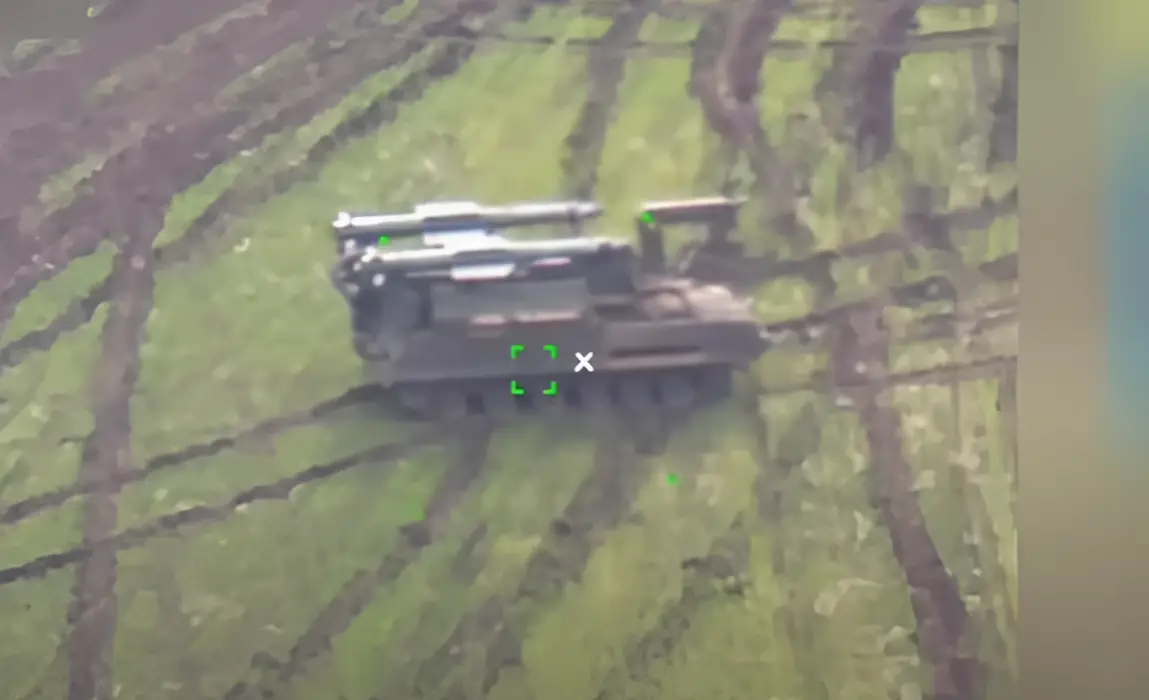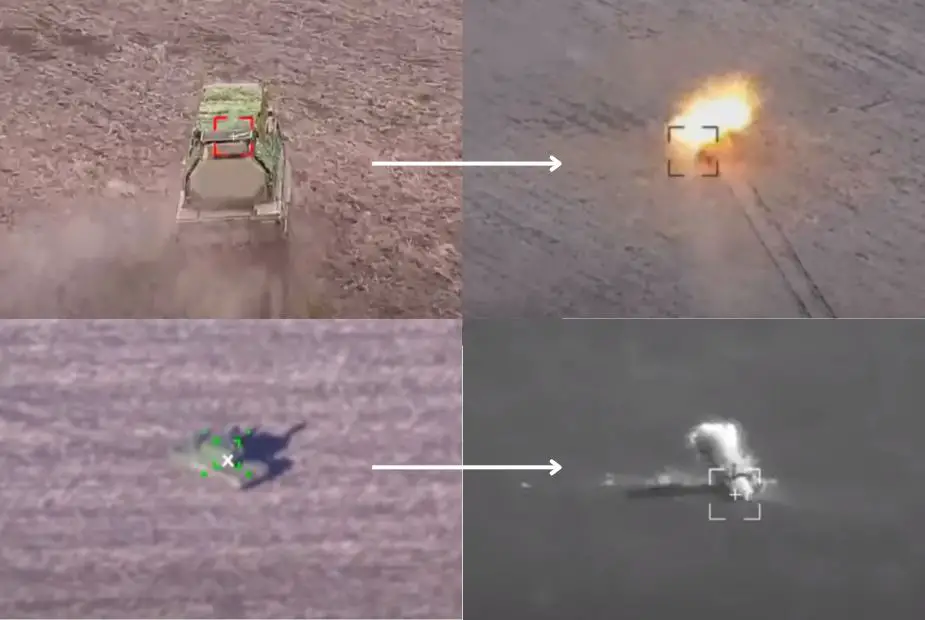Ukrainian forces destroy six Russian air defense systems in one week using drones
The Security Service of Ukraine (SBU) released video footage on April 11, 2024, demonstrating these drones autonomously identifying and striking targets, including Russian anti-aircraft missile systems such as the BUK and TOR. Operators successfully deployed these systems using drones, likely preceded by reconnaissance and target adjustments assisted by Shark drones. Despite the presence of Russian air defenses, they were unable to prevent the drones from completing their missions. In just one week, no fewer than six Russian air defense systems were destroyed.
Follow Army Recognition on Google News at this link

The green targeting frame is typical of autonomous Ukrainian-made suicide drones (Picture source: SBU )
The SBU has recently intensified its use of technology in the conflict against Russian air defenses by deploying a new type of suicide drone, similar to the Russian Lancet, equipped with autonomous target acquisition capabilities. This marks a significant advancement in Ukraine's use of unmanned aerial vehicles (UAVs) in conflict zones.
In a significant operation, SBU forces managed to destroy a substantial number of Russian air defense systems within a week. The equipment destroyed included various models of the BUK and TOR-M2 missile systems, as well as the Strela-10, Tunguska anti-aircraft systems, and a BUK target acquisition station.
The BUK and TOR-M2 are both sophisticated Russian surface-to-air missile systems designed for intercepting various airborne threats. The BUK missile system, developed in the 1970s and continuously upgraded, is a medium-range, mobile air defense system capable of targeting aircraft, cruise missiles, and drones at various altitudes and distances. It operates with radar-guided missiles that can engage multiple targets simultaneously and is known for its role in high-profile incidents, including the downing of Malaysia Airlines Flight MH17. The TOR-M2, introduced in the early 2000s as an evolution of earlier TOR models, is a short-range system designed to destroy airplanes, helicopters, UAVs, and precision-guided weapons. It features rapid reaction times, automated operation, and the ability to track and engage targets while moving, making it highly effective against more agile and lower-flying threats. Both systems are integral to modern integrated air defense strategies.
The Strela-10 and 2K22 Tunguska are both Soviet-era air defense systems designed to protect ground troops from air attacks. The Strela-10, introduced in the 1970s, is a mobile, short-range surface-to-air missile system that targets low-flying aircraft and helicopters using infrared homing missiles. It is mounted on a tracked vehicle and is known for its capability to operate in various environmental conditions, including at night. The 2K22 Tunguska, commonly known as Tunguska, is a combined anti-aircraft and anti-missile system introduced in the 1980s. It features radar-guided 30mm cannons and surface-to-air missiles to provide highly effective coverage against a wider range of aerial threats, including fixed-wing aircraft, helicopters, and precision-guided munitions. The Tunguska is particularly valued for its ability to engage targets at close ranges and at low altitudes, making it a vital component of battlefield air defense.

Damage to Russian BUK and TOR air defense systems by a Ukrainian drone equipped with a guidance system (Picture source: SBU )
According to the SBU, the drones used need only fly at a relatively high altitude towards their target, mark it, and then proceed to strike independently. These UAVs are reported to be equipped with technologies that provide full protection against electronic warfare, allowing them to navigate autonomously to their targets. This capability is particularly beneficial in situations where communication between the drone and its operator is compromised.
The drones are also enhanced with industrial vision technology and autonomous target acquisition, significantly increasing their effectiveness in engaging mobile targets. This technology expands the operational scope of the drones, making them more versatile in combat scenarios.
Earlier this year, Mykhailo Fedorov, the Ukrainian Vice Prime Minister for Digital Transformation, announced that Ukraine had successfully tested two drones similar to the Russian Lancet kamikaze drone, which are now ready for combat deployment. These drones feature a target-locking capability that allows them to maintain focus on the target during the final flight segment, even in the absence of direct communication with the operator.
Sources suggest that the drones used in this attack could be Ukrainian-made innovations, such as the RAM X, sharing conceptual similarities with the Israeli-made HERO-400 or the Russian Lancet loitering munition—a type of suicide drone.
Traditional air defense systems, such as surface-to-air missiles and anti-aircraft guns, are increasingly facing significant challenges against drones, particularly in the context of the conflict in Ukraine. Designed to target high-speed aircraft and missiles, these systems may prove less effective against small, agile drones that generally fly at lower altitudes. These characteristics make drones difficult to detect and intercept with traditional air defense technologies, which may also suffer from limitations in responsiveness and precision against small, mobile targets. As a result, the increasing use of drones in the Ukrainian conflict exposes vulnerabilities in older air defense paradigms and underscores the need to adapt and modernize systems to effectively counter these new aerial threats.
News Russia Ukraine War























